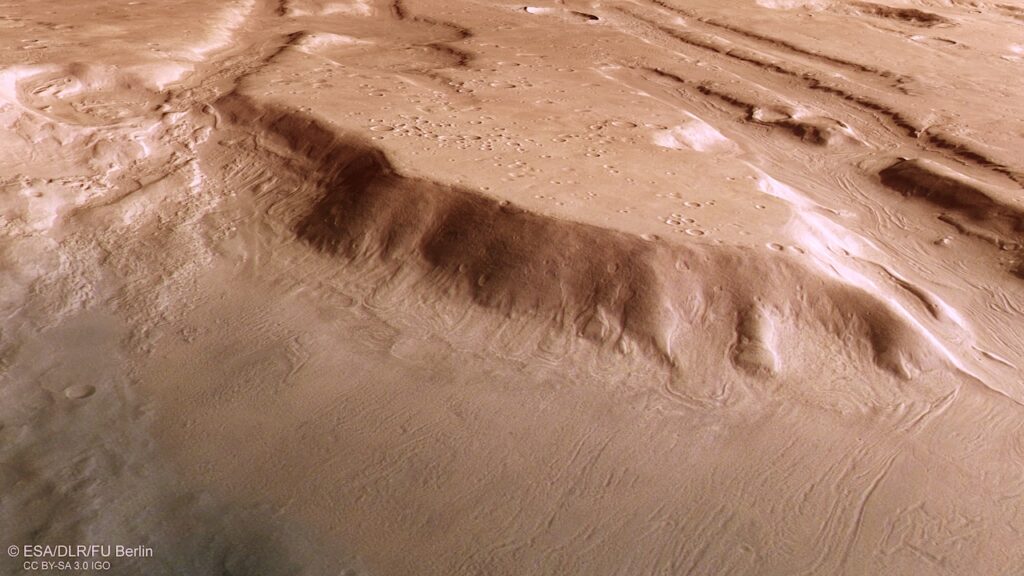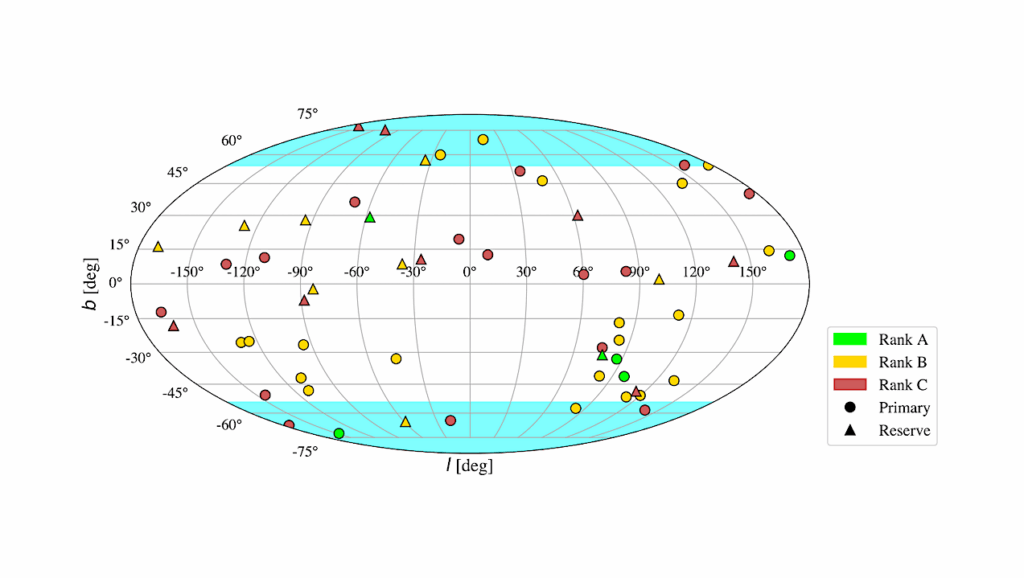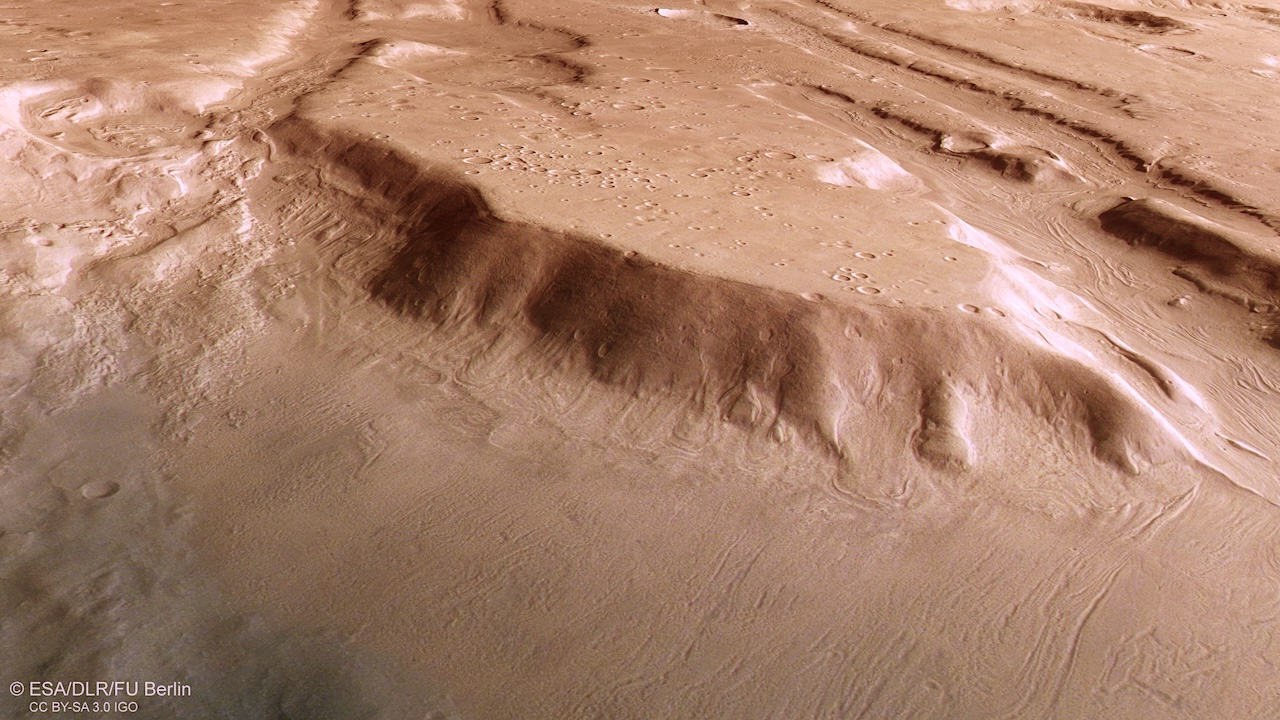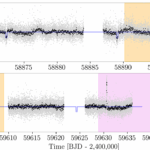Now Reading: Prebiotic Chemistry Insights for Dragonfly: Thermodynamics of Amino Acid Synthesis in Selk Crater on Titan
-
01
Prebiotic Chemistry Insights for Dragonfly: Thermodynamics of Amino Acid Synthesis in Selk Crater on Titan
Prebiotic Chemistry Insights for Dragonfly: Thermodynamics of Amino Acid Synthesis in Selk Crater on Titan
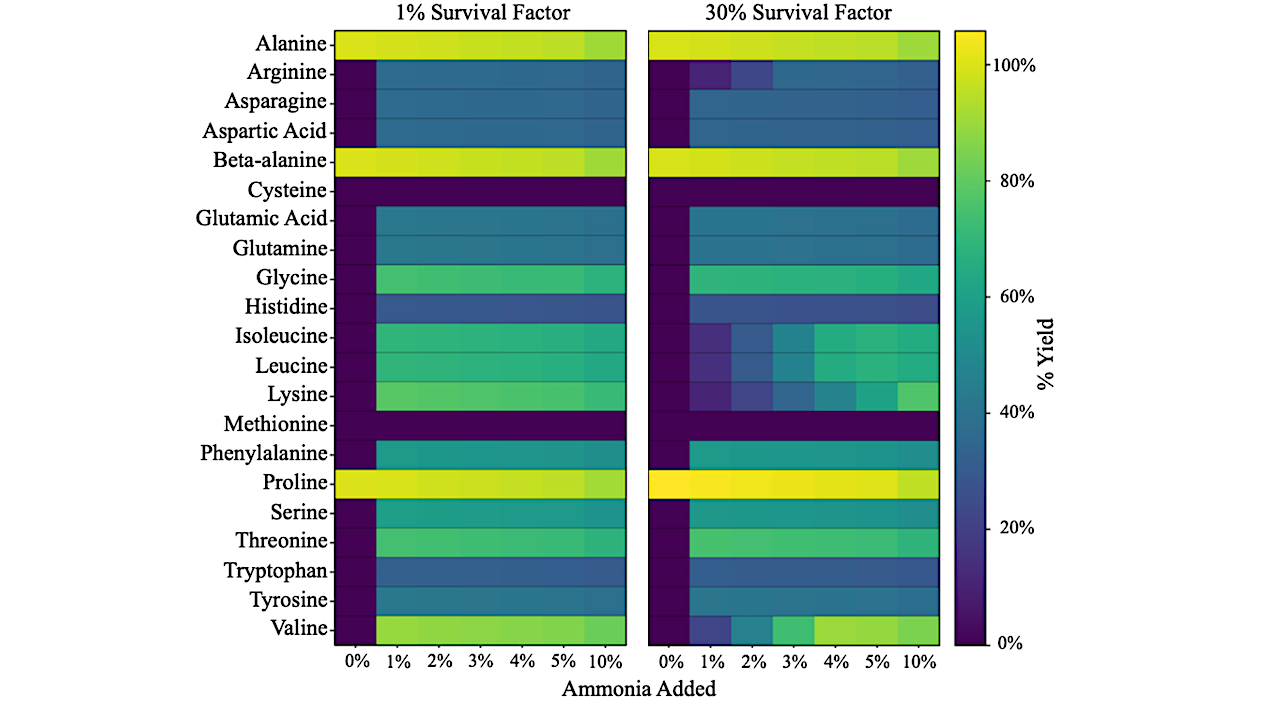
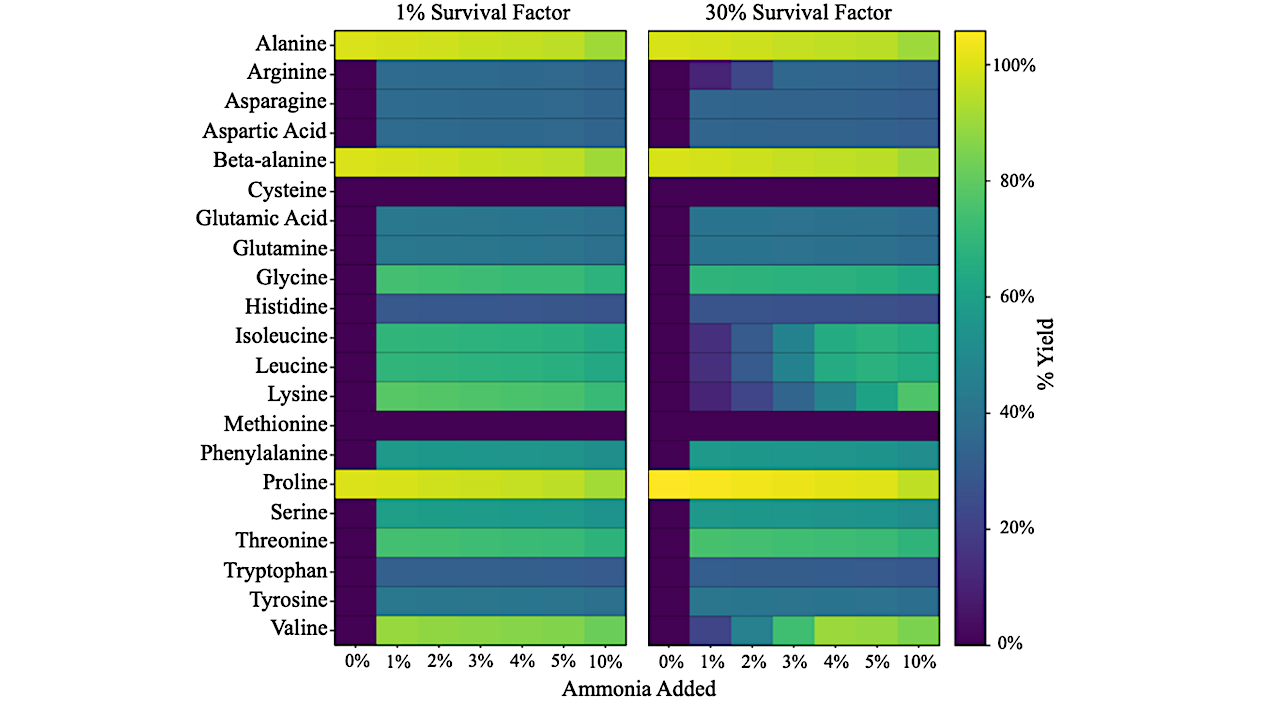
Heat maps of amino acid percent yields at 0 ºC relative to the starting HCN inventory with 1% and 30% survival factors of initial organic inventory. Columns correspond to varying NH3 concentrations (0–10% of the total water content). Rows list the 21 amino acids evaluated. Cell shading follows a viridis scale from 0% (purple) to 100% (yellow). — astro-ph.EP
Saturnian moon Titan presents a compelling testbed for probing prebiotic chemistry beyond early Earth. Impact-generated melt pools provide transient aqueous habitats in an otherwise cryogenic environment.
We use Cantera equilibrium models to assess whether mixtures of hydrogen cyanide (HCN), acetylene (C2H2), and ammonia (NH3) can drive amino acid synthesis in Selk-sized craters. Across twenty-one amino acids (twenty proteinogenic plus beta-alanine), NH3-free systems yield only proline, alanine, and beta-alanine, whereas adding as little as 1% NH3 (relative to H2O) renders almost the full suite accessible, with yields peaking at 2% and tapering thereafter.
The NH3-free alanine result implies alternative pathways beyond classical Strecker or aminonitrile hydrolysis, suggesting acetylene, abundant on Titan but scarce on early Earth, as a plausible feedstock. We identify acrylonitrile (detected on Titan) as a thermodynamically favorable intermediate that can convert to alanine under aqueous conditions in an NH3-free pathway.
For glycine and alanine production from nitrile hydrolysis, comparison with laboratory kinetics shows that our equilibrium models predict near-complete conversion, while observed rates yield only partial products over weeks. Yet estimated chemical equilibration times (years-centuries) are far shorter than melt lifetimes, supporting plausibility of equilibrium in situ.
These predictions are directly testable with Dragonfly mass spectrometer (DraMS), for which we recommend pre-flight standards to test proline, alanine, beta-alanine, cysteine, and methionine. The first three offer the best chances for amino acid detection regardless of ammonia availability; the latter two offer diagnostic tools for determining the presence of reactive sulfur in post-impact Titan ponds.
Ishaan Madan, Ben K.D. Pearce
Comments: Note that there is an appendix after the references of the main manuscript
Subjects: Earth and Planetary Astrophysics (astro-ph.EP); Chemical Physics (physics.chem-ph); Biomolecules (q-bio.BM)
Cite as: arXiv:2511.09636 [astro-ph.EP] (or arXiv:2511.09636v1 [astro-ph.EP] for this version)
https://doi.org/10.48550/arXiv.2511.09636
Focus to learn more
Related DOI:
https://doi.org/10.3847/PSJ/ae1c18
Focus to learn more
Submission history
From: Ishaan Madan
[v1] Wed, 12 Nov 2025 19:00:04 UTC (1,188 KB)
https://arxiv.org/abs/2511.09636
Astrobiology,
Stay Informed With the Latest & Most Important News
Previous Post
Next Post
-
 012024 in Review: Highlights from NASA in Silicon Valley
012024 in Review: Highlights from NASA in Silicon Valley -
 02Panasonic Leica Summilux DG 15mm f/1.7 ASPH review
02Panasonic Leica Summilux DG 15mm f/1.7 ASPH review -
 03How New NASA, India Earth Satellite NISAR Will See Earth
03How New NASA, India Earth Satellite NISAR Will See Earth -
 04And Thus Begins A New Year For Life On Earth
04And Thus Begins A New Year For Life On Earth -
 05Astronomy Activation Ambassadors: A New Era
05Astronomy Activation Ambassadors: A New Era -
06SpaceX launch surge helps set new global launch record in 2024
-
 07Space Force plans new ‘Futures Command’ amid pressure to speed up modernization
07Space Force plans new ‘Futures Command’ amid pressure to speed up modernization












